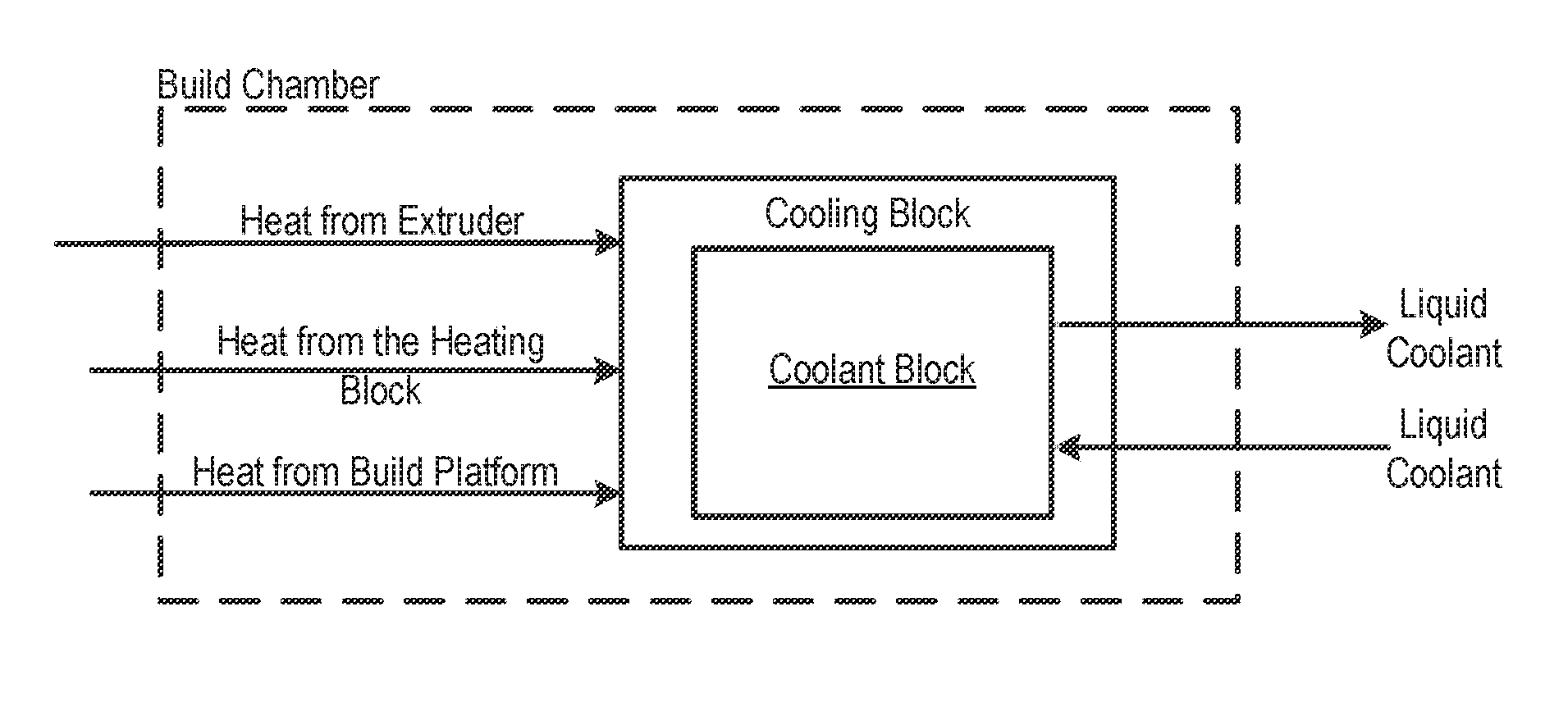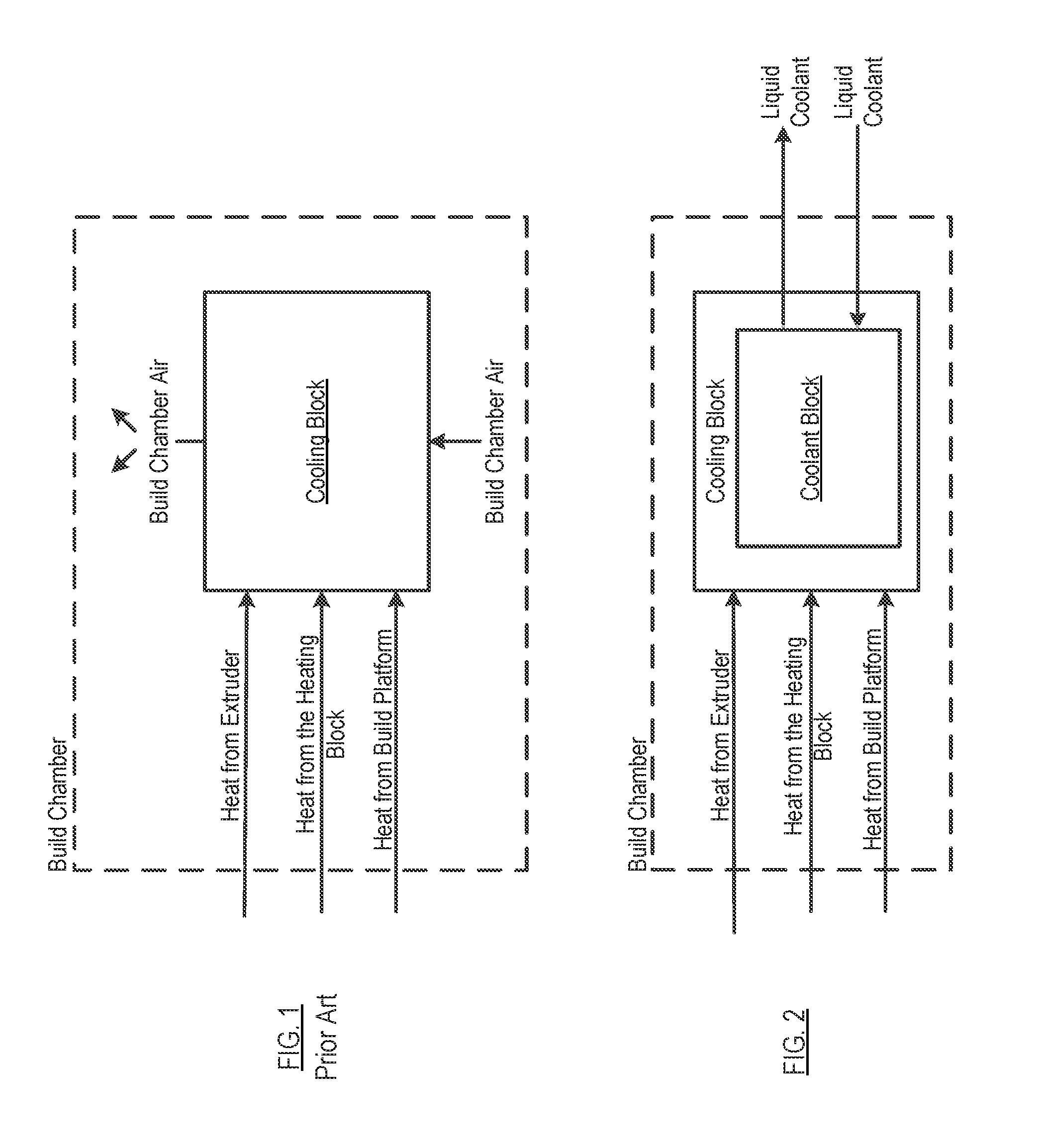Fused filament fabrication using liquid cooling
a technology of liquid cooling and fused filament, which is applied in the direction of additive manufacturing apparatus, applying layer means, etc., can solve the problems of frequent clogging of 3d printers using fff processing, excessive plug state, and excessive plug state, so as to facilitate the use of high-temperature, high-viscosity materials, and prevent or substantially reduce the incidence of clogging
- Summary
- Abstract
- Description
- Claims
- Application Information
AI Technical Summary
Benefits of technology
Problems solved by technology
Method used
Image
Examples
Embodiment Construction
[0029]As described in the background, in prior-art FFF systems, a fan is used to remove heat from the cooling block thereby preventing clogging and reducing pressure in the system. For most FFF systems, the cooling block is cooled by a fan that blows air (sourced from the build chamber) over the cooling block. As a consequence, the cooling block temperature is, at best, maintained at the build chamber temperature.
[0030]In accordance with the present teachings, a modified FFF system and method are disclosed wherein liquid cooling is used to reduce the temperature of the cooling block below the build chamber temperature.
[0031]FIG. 3 depicts system 100 for 3D printing, which utilizes a modified FFF-based process. System 100 includes housing 102, build chamber 104, gantry 106, fixture 110, extruder head 112, cooling block 115, heating block 122, build platform 124, controller 126, and a thermal management system, interrelated as shown. As discussed further below, a distinguishing charac...
PUM
| Property | Measurement | Unit |
|---|---|---|
| Temperature | aaaaa | aaaaa |
| Viscosity | aaaaa | aaaaa |
| Dimension | aaaaa | aaaaa |
Abstract
Description
Claims
Application Information
 Login to View More
Login to View More - R&D
- Intellectual Property
- Life Sciences
- Materials
- Tech Scout
- Unparalleled Data Quality
- Higher Quality Content
- 60% Fewer Hallucinations
Browse by: Latest US Patents, China's latest patents, Technical Efficacy Thesaurus, Application Domain, Technology Topic, Popular Technical Reports.
© 2025 PatSnap. All rights reserved.Legal|Privacy policy|Modern Slavery Act Transparency Statement|Sitemap|About US| Contact US: help@patsnap.com



